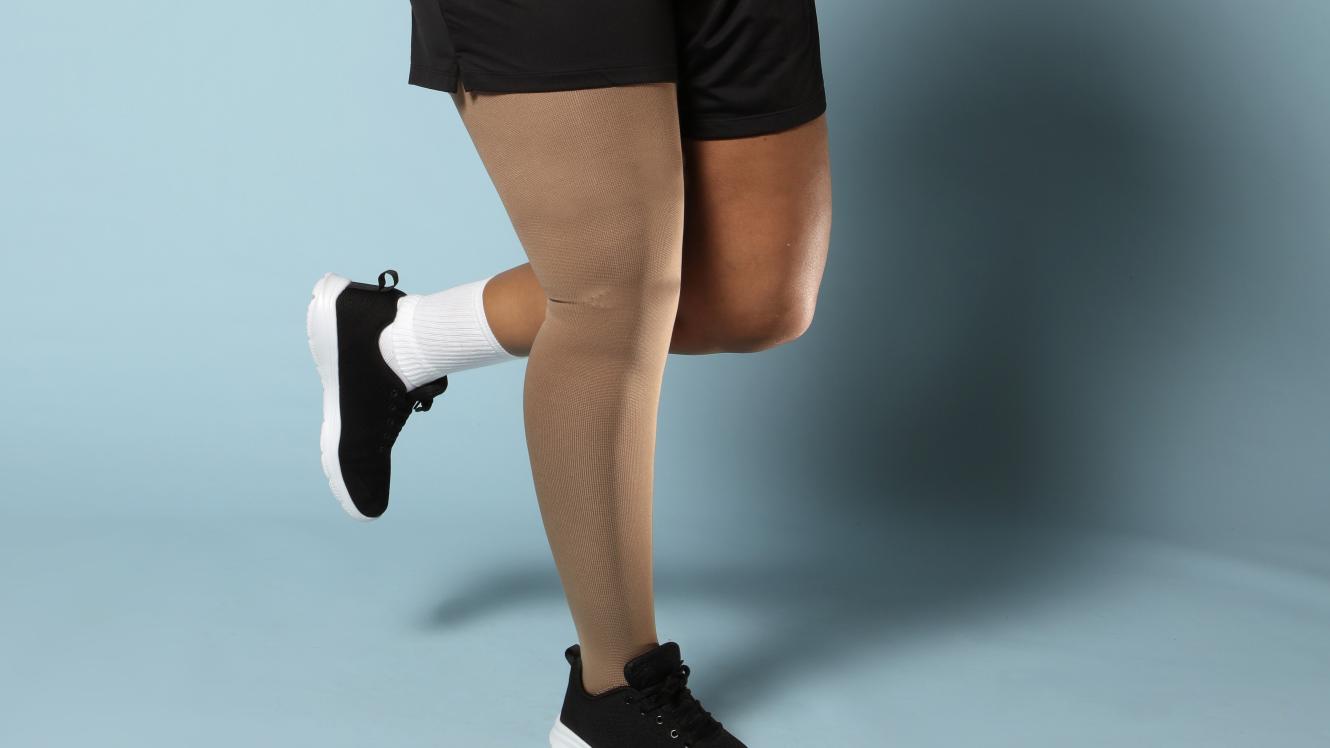Lymphedema of the lower limbs
Triggered by a malfunction of the lymphatic system, lymphedema of the lower limb(s) causes discomfort and risks of skin complications. It must be treated by a combination of manual drainage and compression of the affected limb.

Lymphedema of the lower limbs is caused by a slowing down or blockage of the lymph fluid that circulates in the lymphatic system. Lymph stasis results in a localised or diffuse increase in the volume of the limb(s) and changes in the subcutaneous tissue. The limb thickens, with the bony prominences of the knee or ankle disappearing. In severe cases, it can be accompanied by skin problems and yellowing of the toenails.
Primary or secondary lymphedema
Depending on how it develops, a differentiation is made between:
- Primary lymphedema of the lower limbs. This is present at birth or develops in early adulthood, often following a mild injury, such as a sprain, impact or insect bite. It usually affects both legs.
- Secondary lymphedema. This develops following localised damage to the lymphatic network due to surgical treatment of a cancer in the pelvic region (cervical, ovarian, prostate, bladder, rectal cancer, etc.) or following an infection, for example. In this case, it usually affects one of the limbs only.
Active management to restore mobility
Treating lymphedema of the lower limbs involves applying bandages and manual lymphatic drainage (massage of areas affected by lymph stasis) by the physiotherapist. The long-term use of compression garments is necessary: socks, stockings or tights depending on the cases.
This is supplemented by lifestyle measures (gentle physical exercise, weight control) and skincare. These measures help reduce the risks of exacerbation of the lymphedema and infections of the skin (erysipelas) and lymphatic vessels (lymphangitis). Surgery may be considered exceptionally in severe cases and if other treatments fail.